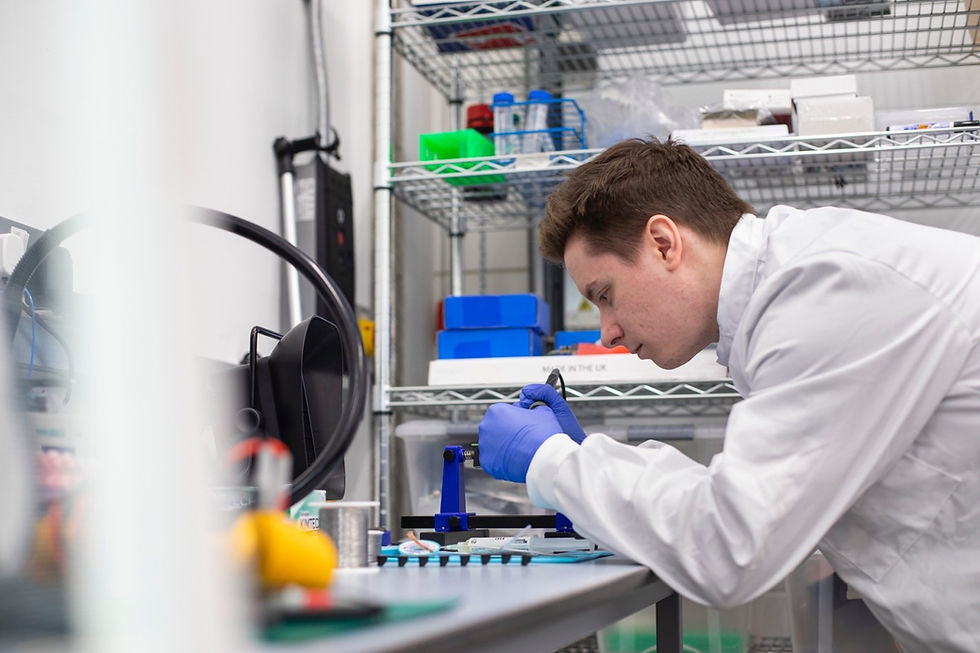5 Key Benefits of Space-Based R&D for Pharmaceutical Advancements
- msenthilprabu
- Feb 27
- 2 min read
Updated: Apr 2

Media Credit: NASA
Space research has become an essential edge in advancing healthcare and pharmaceutical development. Microgravity offers a unique environment that’s helping scientists tackle longstanding challenges in drug design, disease modelling, and more. Here’s how space-based R&D is reshaping the future of medicine.
1. Enhanced Protein Crystallisation for Drug Efficacy - KEYTRUDA® (pembrolizumab)
In microgravity, protein crystals grow larger and more uniformly than they do under Earth’s gravitational pull, leading to high-quality crystal structures that improve drug efficacy. This environment allowed Merck scientists to study the proteins in Keytruda®, their immunotherapy for certain cancers, and develop a subcutaneous (Subcut) formulation. This transition from intravenous (IV) to Subcut administration has made treatments more accessible and less invasive, reducing both time in clinical settings and costs.
2. Accelerated Disease Modelling for Faster Discovery
Microgravity accelerates the replication of disease models, providing quick and invaluable insights into disease mechanisms. UC San Diego’s recent cancer study, for instance, showed that cancer cells grew over 365 times faster in space, allowing scientists to quickly identify a “kill-switch” for the ADAR1 (cancer cloning gene), a potential target for new cancer therapies. This speed in disease modelling means that years of Earth-based lab research can be accomplished in a matter of days in space, vastly reducing the time needed to identify and validate treatment targets.
3. Optimising Drug Formulations for Safety and Precision
Studying drug interactions in microgravity provides new insights into formulation safety. During COVID-19 research, scientists investigated Remdesivir’s interaction with SBECD (sulfobutylether-β-cyclodextrin), used to enhance the drug’s solubility. This aimed to optimise formulation that reduced the cyclodextrin content, to lower its risk application for coronavirus infected patients with decreased renal functions. Such advancements showcase how space-based research can make treatment safer and more effective.
4. Advancing Organ-on-a-Chip Technology for Complex Disease Research
"Organ-on-a-chip" technology, designed to mimic the function of human organs, is taking research to new heights on the International Space Station. Emulate’s Brain-Chip, for example, was deployed to study the blood-brain barrier (BBB) under space conditions. By studying the Brain-Chip in microgravity, scientists can observe responses to inflammatory stimuli and analyse changes in BBB permeability, paving the way for new approaches to neurological disease treatments. This technology, which includes chips simulating organs like the liver and lungs, offers a controlled environment to test how organs respond to drugs and disease stimuli, accelerating research into complex disease processes.
By utilising microgravity to advance Organ-on-a-Chip technology, space R&D is offering new pathways for simulating organ function and drug interactions in ways that Earth-based labs can’t achieve.
The unique microgravity environment of space is proving to be a powerful tool for tackling longstanding challenges in drug design, testing, and manufacturing. As research expands, space-based R&D may continue to refine and accelerate the path to more effective, accessible treatments on Earth.
Want to Dive Deeper?
If you’d like to explore specific use cases in more detail—whether it’s protein crystallisation, Organ-on-a-Chip technology, or another area—let us know and we’d be glad to provide more insights tailored to your interests!



I don't like to risk my health, so I approached the choice of supplements with caution. I read a bunch of reviews, looked at the ingredients, and only then stopped at the site where there were superdrol pills price. I liked that everything was clear: what for what, how it works, what are the contraindications. After a month of taking it, I feel a real benefit - the body recovers faster, training is easier.